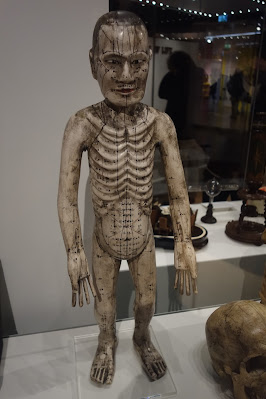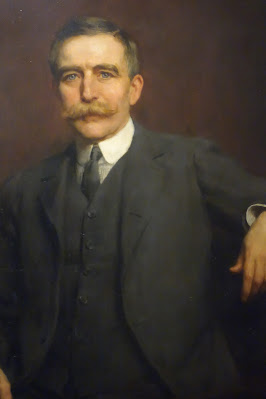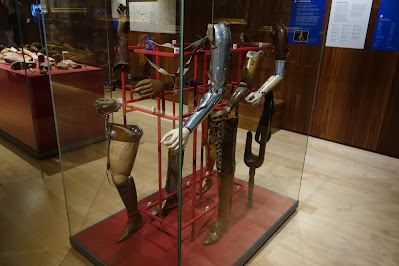 |
| Walking Sticks that belonged to Charles Darwin |
 |
| More than 500 votive offerings ended up in Wellcome's collection. These terracotta Etruscan or Etrusco-Campanian votives on display are from 4th to 2nd century BC. |
 |
| A doctor's signboard with human teeth from China, possible 19th century |
 |
| Napoleon Bonaparte's Toothbrush! |
 |
| A shrunken Head from the Amazon Rainforest |
 |
| A lock of hair said to have belonged to "Mad" King George III who lived 1760 to 1820 Scientific tests have revealed high concentration of arsenic which may have explained his madness. |
 |
| Acupuncture Figure from Japan 17th century |
 |
| Nkisi, a container for spiritual forces, from the Congo circa 1900 |
 |
| A guillotine blade used during the French Revolution. The last execution by guillotine in Europe took place in 1977 in Marseille, France. |
 |
| An oil portrait of Henry Wellcome |
 |
| Henry Wellcome collected hundreds of paintings including this 18th century painting of a man stabbing a woman. who we're told was saved by praying to the Virgin Mary. |
 |
| Henry Wellcome amassed over 4,000 surgical instruments including many amputation saws and obstetrical forceps. Many of these were used before anesthetics were developed. |
 |
| Artwork in paper depicting a microbial community |
 |
| A display about bacteria and virsuses. |
 |
This prosthetic leg belonged to a man in 2010 injured in Afghanistan. |
 |
| Our genetic code or genome is the blueprint of life. |












How interesting and yet how weird.
ReplyDelete